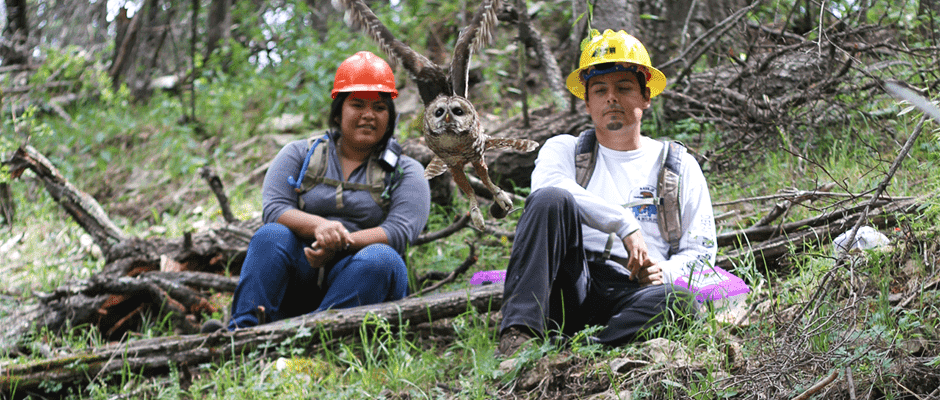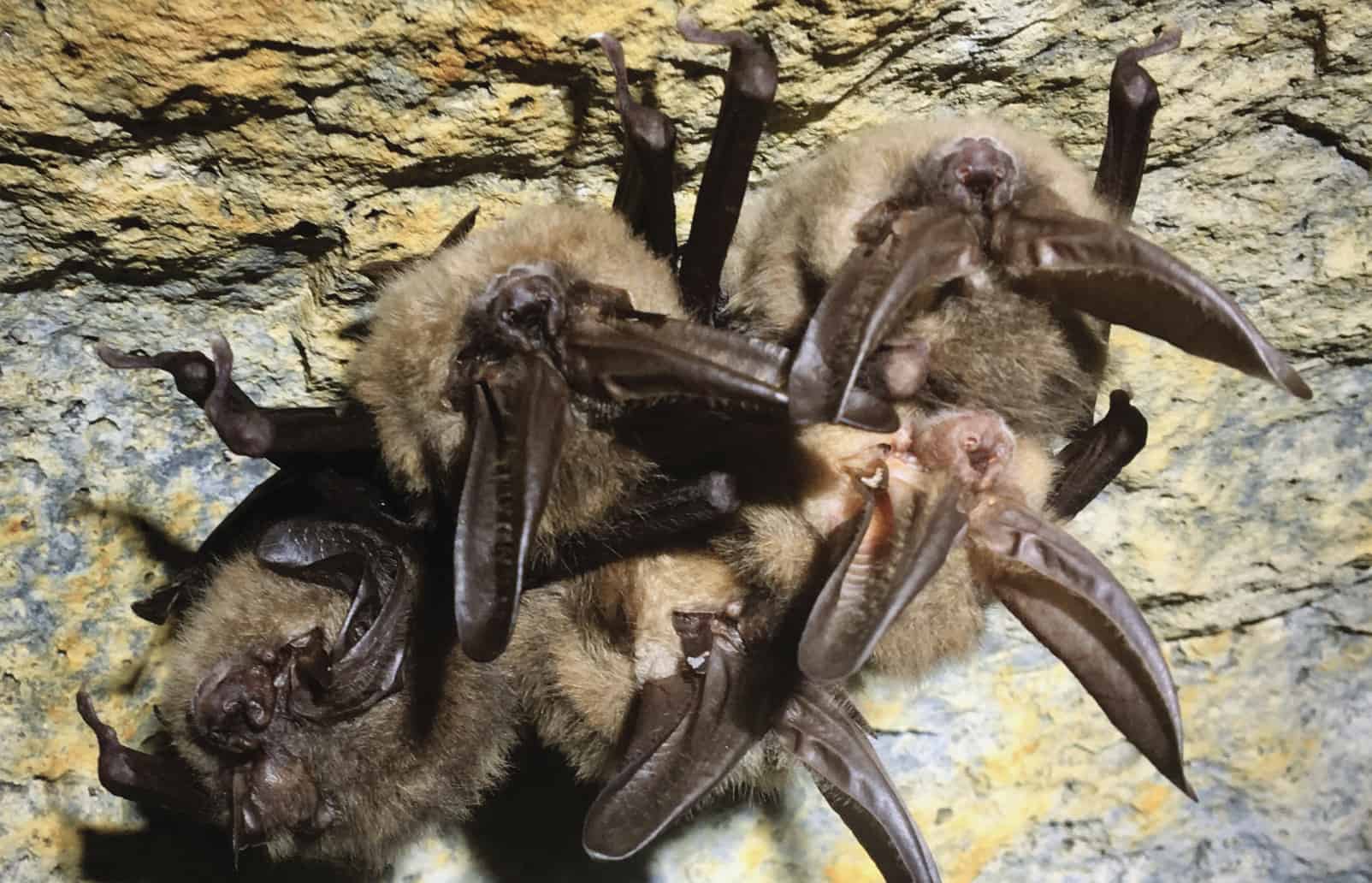Share this article
Recruiting next generation of Native American wildlifers
At sunset on a steep, north-facing slope at 7,500 feet, research assistants Chase Voirin (Navajo) and Elisha Flores (Hoopa) stood among massive Douglas-fir trees imitating the four-note territorial call of the Mexican spotted owl (MSO). “Who! Who-who! Whooooo!” They anxiously waited for a response. Within minutes, an owl hooted in the distance, and Voirin and Flores began following the sound of its call within their study site on the Mescalero Apache Indian Reservation in south-central New Mexico. This was their first introduction to working with spotted owls, and immediately they were captivated by the birds’ calm, confident, unique demeanor. The experience would lead to a deep passion for working in tribal forests with a threatened species that carries cultural connotations unlike any other.
As participants in the Native American Research Assistantship Program provided by the U.S. Forest Service and The Wildlife Society (TWS), Voirin and Flores often hiked in remote areas to locate, monitor and assess any changes in occupancy and reproduction of MSO breeding pairs. Developed and coordinated by Dr. Serra Hoagland, Forest Service biological scientist, this research was part of an assessment of wildfire risk in MSO habitat on the Reservation and one of 13 unique research projects providing assistantship opportunities to Native American students since the program’s inception in 2015. Students apply to the program in the fall to work with Forest Service Research & Development scientists during the following field season.
The Native American Research Assistantship Program enhances the diversity of resource professionals and recognizes that traditional ecological knowledge (TEK) and expertise held by Indian people and tribal communities hold great promise for sustainable ecosystem management. Forest Service research projects included in the program must address regional wildlife conservation issues, data gaps, and, most importantly, wildlife management issues that are important to the subsistence, livelihood, cultural, or spiritual values of one or more tribes. These goals are in direct response to maintaining Forest Service federal-tribal trust responsibilities and ensuring that Forest Service science is meeting research needs identified by tribal communities. Projects have ranged from black oak restoration in California to wolverine and bat monitoring projects in the Rocky Mountain and Lake States regions, respectively.
Throughout the summer of 2016, Voirin and Flores not only monitored owls and their nests but also collaborated with the Bureau of Indian Affairs (BIA) on a forest fuel-load sampling project.
“It’s great to see the Forest Service, TWS and BIA work with the Mescalero Apache Division of Resource Management and Protection on the management of these forested ecosystems, as well as the conservation of a culturally iconic species like the Mexican spotted owl,” Voirin said. “This is a great example of successful collaboration between federal, tribal, and non-governmental entities, and can serve as an example for future projects involving tribes and wildlife conservation.”
Additionally, Voirin and Flores worked with Northern Arizona University researchers and forestry faculty on a tee-pee pole climate change vulnerability analysis and a wildfire reconstruction project, and assisted with a small mammal post-treatment monitoring on tribal lands through a Collaborative Forest Restoration Project. The variety of fieldwork and research experience they gained will assist them in their future endeavors as professionals whose work places a strong emphasis on building trusting relationships when conducting research on tribal lands.
Training and recruiting the next generation of Native American wildlife professionals is a win-win for all parties involved. Forest Service scientists are able to accomplish their field research tasks, tribal community research needs are met, and Native American students gain valuable insights into careers with the Forest Service. Reflecting on her experience, Flores said, “It was extremely encouraging and important to me to see TWS and the Forest Service supporting Native students and professionals on current projects taking place in collaboration with Native tribes. Native representation is often lacking in these fields, and I appreciate TWS and the Forest Service for seeking ways to actively address this issue. The amount of support I received while being involved with this program was more than I could have asked for, and the new experiences I gained exceeded my expectations. This program helped me feel more prepared and opened my eyes to so many possibilities. This was a summer I will never forget.”
2016 marks the second year of the partnership between the Forest Service and The Wildlife Society in providing The Native American Research Assistantship Program. The program is slated to continue in 2017 with a list of projects and opportunities available online.
Header Image: A female Mexican spotted owl (Strix occidentalis lucida) is mid-air between Elisha Flores (left) and Chase Voirin (right) on the Mescalero Apache Indian Reservation, NM. Flores and Voirin participated in the 2016 Native American Research Assistantship program with Dr. Serra Hoagland, Biological Scientist and Co-Point of Contact for Tribal Relations for the Southern Research Station.








